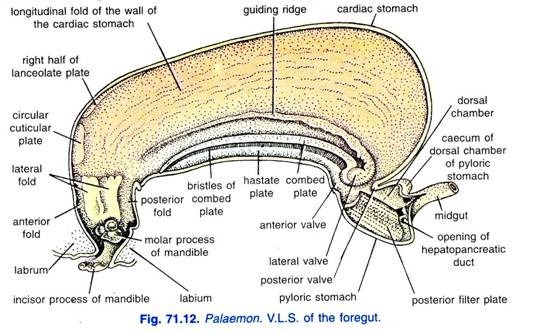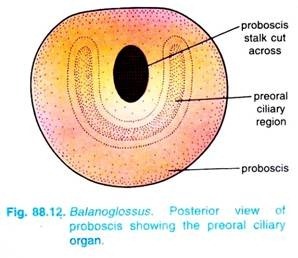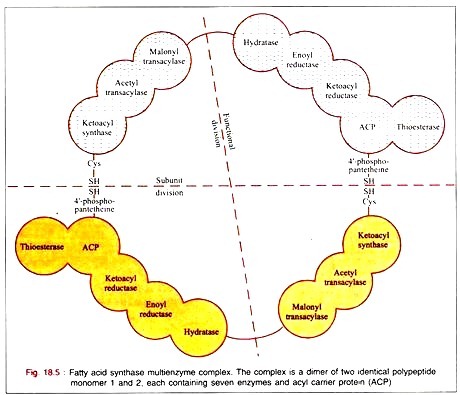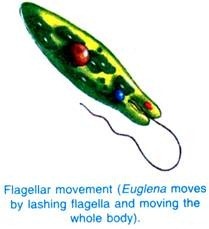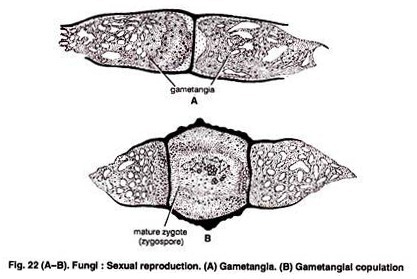ADVERTISEMENTS:
Let us make an in-depth study of the anomalous structures in plants.
The angiosperms in particular are not only very large in number, but they exhibit infinite varieties as regards their structures as well.
It is really difficult to draw a line between the structures which are normal and those which may be considered abnormal. But in a pretty good number of cases departures or deviations from the normal structures are noticed. These are referred to as anomalous structures.
ADVERTISEMENTS:
Peculiarities in structures may be directly influenced by external environmental conditions. The woody climbers or lianes and the storage organs exhibit anomalous structure and abnormal secondary increase in thickness, as they are constructed differently from the normal ones both from morphological and physiological points of view.
At the same- time there &re cases of anomalous condition which are non-environmental and which appear to be merely cases of variations of the design. Haberlandt has called them adaptive and non- adaptive anomalies of secondary growth in thickness Respectively.
Occurrence of accessory vascular bundles in the pith, called medullary bundles, and in the cortex, known as cortical bundles, are characteristic of many families. Medullary bundles are common in families Nyctaginaceae (Fig. 651), Amaranthaceae (Fig. 653), Piperaceae, etc., where many bundles occur in pith either in rings or irregularly.
They may be leaf-trace bundles or cauline ones, but even the latter form a part of the leaf- trace system from physiological point of view. Cortical bundles are really leaf-trace bundles which pursue an independent course through the cortex without entering the ring. They are common in Calycanthus of family Calycanthaceae, in Nyctanthes of family Oleaceae (Fig. 655), Begonia of family Begoniaceae.
ADVERTISEMENTS:
It is an admitted fact that the dicotyledonous stems usually have ring-like disposition of the vascular bundles, whereas those in the monocotyledons remain irregularly scattered in the ground tissue.
A number of cases showing dicotyledons with scattered bundles and monocotyledons with ring-like arrangement of bundles may be cited. Scattered bundles are found in Thalictrum of family Ranunculaceae, in Podophyllum of family Berberidaceae, Papaver of family Papaveraceae.
Many bundles occur in Nymphaeaceae, Primulaceae and some others, where the connected bundles form something like a network, and they have no secondary increase in thickness. The tubular stems of monocotyledons, as in wheat (Fig. 593) and many grasses with hollow internodes, have vascular bundles arranged in rings.
Tamus communis of family Dioscoreaceae, is a glaring example of a monocotyledon with bundles arranged in ring-like fashion towards the periphery round a large central pith.
Peculiarly inverted bundles are also noticed in plants like Rumex crispus and Rheum officinale of family Polygonaceae where phloem, instead of xylem, occurs towards pith in the primary bundles.
In fact, a secondary meristem arises on the outer edge of each phloem strand, which produces xylem elements on the outer side. The inner bundles actually exhibit an inverse disposition of tissues.
A few cases have been cited above showing anomalous structures which are not directly influenced by environmental factors. But in good many cases anomalies particularly in the process of secondary increase in thickness are environmental.
As already stated these structures are quite common in the climbing lianes and storage roots which are different from the normal ones from the points of view of mechanical construction and physiological functions.
Though the methods leading to the formation of anomalous structures are quite variable, they may, however, be put into two categories:
ADVERTISEMENTS:
(i) Where the cambium is of normal type, but due to irregular or peculiar activity the vascular tissues, xylem and phloem elements formed exhibit unusual arrangement and proportion;
(ii) Where the cambium itself is abnormal in disposition and the secondary tissues consequently are unusual in structure and arrangement; or, the original cambium is replaced by other cambium layers formed later which are unusual both in arrangement and behaviour.
The lianes are constructed more or less after the pattern of a twisted rope, and need high degree of tensile strength with pliancy. Unlike a solid mass of woody cylinder of an erect stem, here the cylinder splits up into separate strands with interpolated softer tissues, so that the strands can slip past one another.
A brief review of a few types is given here:
ADVERTISEMENTS:
In some liane type of stem as in Bignonia and other members of family Bignoniaceae, the cambium is normal in disposition and activity to begin with, but it soon cuts off different proportions of xylem and phloem in different points.
At four points arranged in form of a cross, formation of secondary xylem is reduced and that of secondary phloem correspondingly increased. As a result the woody cylinder appears to have four longitudinal grooves which become increasingly deeper with secondary growth.
The cambium breaks up into a number of strips, widest ones occurring opposite the four projecting ridges of wood and the narrow ones at the bases of the grooves. As a result peculiar structure with ridged and furrowed xylem cylinder (Figs. 648A & 649) is formed. Deeply ridged vascular cylinder is formed in some plants due to the fact that the cambium produces only ray parenchyma cells at some points.
A very peculiar structure is noticed in Serjania, a climber of family Sapindaceae, where the cambium from the very beginning occurs in separate strips, each strip having 25 [one]
surrounding portion of primary tissues. It thus appears like a deeply-lobed compound structure made of several stems fused together (Figs. 648B & 650).
With age and consequent development of periderm the compound structure becomes more marked. The development of interfascicular cambium and its union with fascicular ones result in the formation of separate cambium rings. In fact, there is a large central stele, surrounded by a few peripheral ones.
The cambium rings of the steles independently form secondary xylem, composed of vessels and tracheids, on the inner side, and a few layers of phloem on the outer. A more or less similar structure is formed in Bauhinia of family Leguminosae, where the original cambium breaks into strips and proliferation of xylem parenchyma brings about separation of the vascular cylinder (Fig. 648C).
A peculiar anomalous thickening due to occurrence of additional cambial layers— total or partial, outside the primary cambium is characteristic of some members of Convolvulaceae, Menispermaceae and others.
Here each central layer cuts off secondary xylem and secondary phloem for some time; its activities stop soon and a new layer of secondary meristem appears further out either in the primary cortex or even in secondary phloem.
This process may be repeated several times. Another type of anomaly is noticed in Tecoma, where a secondary cambium arises on the inner side of the normal woody cylinder. This internal cambium cuts off both xylem and phloem, but in reverse order. So phloem here is intraxylary and secondary in origin (Fig. 651).
In some members of family Combretaceae—Combretum, Entada, and Stiychnos of family Loganiaceae anomalous structures result from occurrence of unusual type of phloem which remains embedded in secondary xylem. This type is known as interxylaiy or included phloem. Here the cambium cells for some time produce secondary phloem on the inner side instead of forming normal secondary xylem.
ADVERTISEMENTS:
Very soon the cambium takes to normal activities, i.e., it goes on cutting off secondary xylem. The secondary phloem is thus buried in the secondary xylem, and is termed included or interxylary phloem. It should not be at any rate confused with internal or intraxylary phloem which is normally primary in origin, but secondary in Tecoma.
Often unusual or anomalous structures are formed due to development of secondary cambial zones which usually arise in the pericycle and function like the normal cambium. The secondary cambium originates either when the first formed layer has ceased to function, or it may happen that the additional layers arise successively and cease to function.
In that case cylinders with alternate concentric layers of xylem and phloem are formed, as found in some climbers of family Poly- galaceae and Nyctaginaceae (Fig. 648D).
Variations in the nature and activities of the secondary layers lead to the formation of extremely unusual types of stems which are common in many lianes having special habits and mechanical requirements.
In the families Nyctaginaceae, Amaranthaceae, Chenopodiaccae, etc., anomalous structures are formed in rather different ways. The vascular bundles normally appear either in a ring or they remain irregularly scattered in the ground tissues (medullary bundles). They are as usual collateral ones with fascicular cambium.
ADVERTISEMENTS:
Cambial activities continue in the individual bundles for some time and soon cease. So secondary growth is rather limited. Secondary cambium arises on the outer side of the bundles. This cambium cuts off secondary bundles on the inner side, which remain embedded in a non-vascular tissue, known as conjunctive tissue.
It consists of either thin-walled parenchyma or thick-walled lignified elongate cells. The parenchyma cells undergo gradual lignification and thus become thick-walled. The cambium produces very little tissue on the outer side. The secondary bundles may be irregularly scattered or may remain arranged in concentric, rings.
A transverse section through the stem of Boerhaavia sp., a common weed, of the family Nyctaginaceae would show the following characters (Figs. 652 & 653). The section is more or less circular in outline with uniseriate epidermis having stomata. A few layers of collenchyma in patches with intervening parenchyma cells from the hypodermis followed by parenchyma with distinct intercellular spaces.
The stele, apart from ground tissues, includes vascular bundles in three rings. Two fairly large bundles occur at the central region surrounded by quite a few comparatively much smaller ones forming a loose ring.
The outermost ring consists of pretty large number of much smaller bundles occurring just beneath the pericycle. The central bundles are collateral open ones; but cambial activity remains confined to individual bundles.
Secondary increase in thickness is due firstly to the formation of a continuous cambium cylinder in the outer ring. These cells form secondary xylem and secondary phloem in the fascicular region and lignified conjunctive tissue in the inter-fascicular region.
The activities of this cambium decline soon and a new cambium arise in the parenchyma outside fact, passing through the pericycle. In this manner other cambia may arise outside producing a few growth rings. The newly-formed bundles remain embedded in hard lignified conjunctive tissue. Scanty secondary phloem is formed outside opposite to the xylem vessels.
The stem of Mirabilis jalapa (Figs. 654 & 655) of the same family is rather quadrangular in outline. It more or less resembles that of Boerhaavia, but the medullary bundles are more numerous. Those occurring towards periphery are smaller in size and more crowded, whereas those at the central region are larger and more spaced out (Fig. 654).
Secondary growth is initiated by the formation of secondary cambium originating in the same manner as in Boerhaavia. This cambium cuts off secondary tissues, usually secondary xylem elements on the inner side which remain embedded in the conjunctive tissue. Secondary phloem elements are occasionally formed. The cambium produces very little secondary tissues on the outer side.
Amaranthaceae also shows anomalous secondary growth (Fig. 656). The transverse section is more or less circular in outline with uniseriate epidermis. The ground tissues are well-differentiated. Collenchyma cells occur in the hypodermal region interrupted by chlorophyll-containing parenchyma cells here and there.
The vascular bundles are medullary ones. They are large in number and remain scattered in the pith. The bundles are collateral and open. Cambial activity is confined to the individual bundles, and it ceases soon. Secondary growth occurs due to development of a new meristem— the secondary cambium outside the stele. The cambium cuts off similar bundles with xylem on the inner side and phloem on the outer side. The secondary bundles remain embedded in thin-walled conjunctive tissue, which is wavy in outline on the inner side.
In the stem of Chenopodium album (Fig. 657) of family Chenopodiaceae there is a concentric ring of primary bundles (medullary) which are collateral open ones. They grow in thickness to some extent and then a peculiar anomalous secondary increase ensues when concentric zones of collateral vascular bundles arise from successive rings or arcs of secondary cambium originating in the pericycle or phloem.
Conjunctive tissues with lignified walls are also formed by the secondary cambium in which the bundles remain embedded. A very interesting feature is the occurrence of isolated strands of phloem, called phloem islands, buried in the secondary xylem.
It becomes possible because phloem patches arise centrifugally as usual, and then short arcs of secondary meristem develop on their outer side, which go on producing normal tissues, resulting in the complete enclosure of the phloem patches.
In the stem of Nyctanthes of the family Oleaceae (Fig. 658), apart from normal vascular bundles occurring in more or less a ring, there are four cortical bundles at the ridged portions of the stem. These bundles are inverted. They are obviously leaf trace bundles.
The central vascular bundles are rather compact collateral open ones with intervening patches of parenchyma in form of rays.
In many dicotyledons the roots become fleshy and serve as organs of storage. Anomalies are often noticed in these organs which develop considerable storage parenchyma. Moreover, due to anomalous cambial activities the conducting elements are multiplied and suitably arranged for movement of food materials.
Massive development of storage parenchyma is noticed in many cases in the region of cortex or secondary phloem. Many fleshy roots exhibit a notable deviation from the normal structure in the comparatively poor development of woody tissues.
In the fusiform roots of radish (Raphanus sativus of family Cruciferae), which are formed by the association of the hypocotyl with the base of the tap root, the storage tissue mainly originates by proliferation of parenchyma in the pith, if pith is present and from the secondary xylem—the xylem parenchyma and xylem rays developing massive storage parenchyma.
The vascular elements with some fibres remain arranged in concentric rings here. The fleshy nature of the conical root of carrot (Daucus carota of family Umbelliferae) is also due to massive development of storage parenchyma in the phloem and xylem.
The napiform root of sugar beet (Beta vulgaris) of family Chenopodiaceae exhibit a striking anomalous form of secondary growth, where several cambial-layers are formed in succession (Fig. 659). The first cambium forms a ring of vascular bundles near the primary xylem.
A secondary cambium very soon arises in the pericycle and this is followed by others in rapid succession. All the cambial layers continue to function, but the rate college botany becomes slower after the early period of activity. The cambium, though appearing on continuous bands, produces separate bundles with surrounding conjunctive tissue.
The newly-formed Cambia divide and multiply very rapidly to build up parenchymatous layers. As a result alternate layers of proliferated pericycle and vascular elements are formed. The bundles are largely parenchymatous with very scanty lignified elements.
Continued growth takes place in the bundles by cambial activity and by proliferation of parenchyma of xylem and phloem. Concentric rings are thus formed. A complex system is often formed due to the fact that the layers do not produce complete cylinders and that irregular association occurs with other layers.
The major bulk of the storage parenchyma, however, belongs to phloem. Sugar occurs as storage product in the parenchyma cells specially in those associated with vascular elements.
The fleshy adventitious root of sweet potato (Ipomoea batatas) of family Convolvulaceae exhibits another complex type of anomalous growth (Fig. 659A). Cambium arises in the normal position separating the xylem from the phloem. Both primary and secondary xylem elements develop in the usual manner, but contain a large proportion of parenchyma.
With further development many secondary cambia arise in the parenchyma around individual vessel or vessel groups. These cambia produce a few tracheary elements towards the vessels, a few sieve tubes and laticifers away from the vessels, but a fairly large number of parenchyma in both the directions. At a still later stage tertiary cambia may be formed in the parenchyma. Periderm of pericyclic origin occurs as normal in the periphery.


